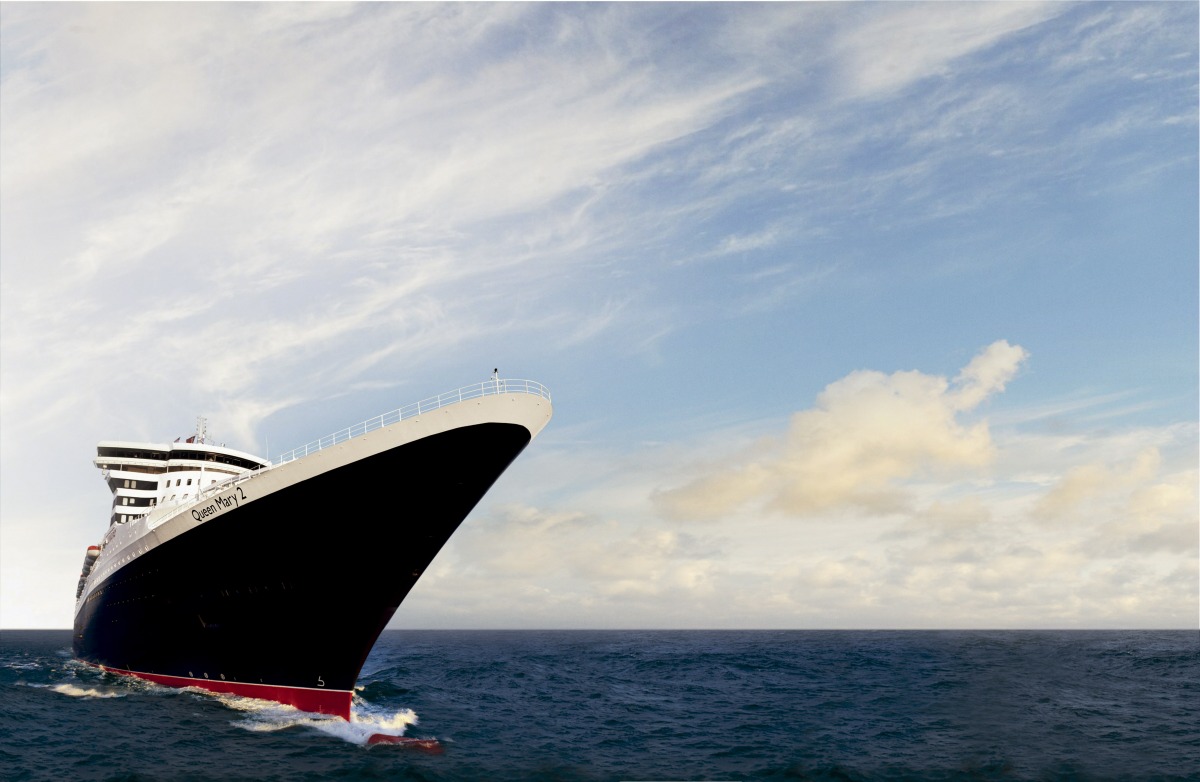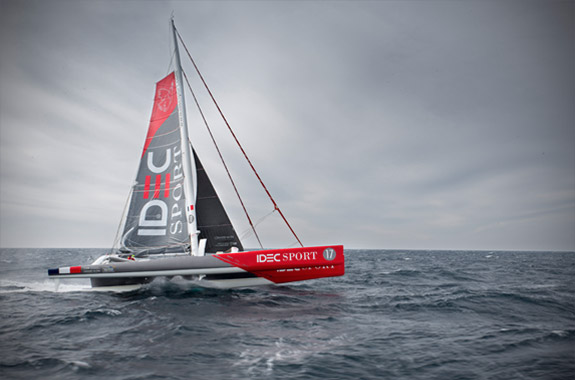
News
A HISTORIC RACE
The Queen Mary 2 VS Ultimate trimarans
An event reserved for the ultimate trimarans over 81 feet (24.68 meters), THE BRIDGE promises a thrilling transatlantic race. On June 25, 2017 – 100 years to the day after the arrival of the Sammies on the French coasts – at 7 pm sharp, the waters of the Loire estuary will bubble with activity when, under the bridge of Saint-Nazaire, three cannon shots – this time as a sign of fraternity – kick-off this 3,152-mile (5,837 km) oceanic race to New York.


On July first in the early morning, after six days at sea, the Queen Mary 2 will enter Manhattan, greeted as tradition demands by the lights of the Statue of Liberty. The legendary 157,000 horsepower “liner”, which is capable of 28 knots of cruising speed, will impose a metronomic tempo on the direct route. According to the statistics, only exceptional weather, which appears once every ten years, would allow the ultimate trimarans, although capable of dazzling speeds of over 35 knots, to steal the spotlight from the steel giant in New York. The regatta is nevertheless exciting, open and engaged between the crews of up to six sailors invited to compete for the first time – and at full steam – on this course between the bridge of Saint-Nazaire and the Verrazano-Narrows bridge, justice of the peace of THE BRIDGE 2017.
THE COURSE
The North Atlantic, a route for records
With its unique layout, THE BRIDGE opens a new route across the North Atlantic against the prevailing winds. The crews gathered for this great symbolic first will have to fight at the highest level tactically, in terms of pure speed, to establish the first reference time between Saint-Nazaire and New York. It is expected that there will be a 24 to 30 hours’ gap between the first sailboats and the Queen Mary 2, which crosses the Atlantic in a straight line or thereabouts.

 There is an exclusion zone off Labrador and Newfoundland known as “the ices” to avoid icebergs and drifting growlers (an iceberg less than 2 meters (6.6 feet));
There is an exclusion zone off Labrador and Newfoundland known as “the ices” to avoid icebergs and drifting growlers (an iceberg less than 2 meters (6.6 feet));
 There is also an “environmental” exclusion zone to the south-east of Boston, to avoid the risk of colliding with cetaceans during migration.
There is also an “environmental” exclusion zone to the south-east of Boston, to avoid the risk of colliding with cetaceans during migration.
Options stratégiques et coups tactiques
Au début de l’été, le risque d’essuyer une forte tempête est moins élevé que sur les transats plus classiques du printemps, sur un parcours similaire à travers l’Atlantique Nord, d’est en ouest. Les systèmes météo sont moins virulents, ils sont également moins prononcés, moins francs. Au-delà des grandes options stratégiques et du choix classique entre une route septentrionale et une route plus sud, le jeu sera ouvert et propice aux décisions tactiques. À bord, les équipages et notamment les duos « skipper-navigateur » devront sans cesse affiner leur trajectoire. Des petits décalages pourront compter significativement à l’arrivée pour limiter l’écart face au Queen Mary 2, et surtout décrocher la victoire.
The fantastic 4
Four aces to challenge the Queen Mary 2
Four sailors experienced in oceanic crossings have already signed up to compete on THE BRIDGE. They are the Queen Mary 2’s first opponents to race on the ocean of choice: the Atlantic. Together with their crews, these offshore racing machines will race intensively on the playing field of the open Atlantic. On board their high tech prototype 30 metre-long machines, the crews will lead the start ahead of the Queen Mary 2.










